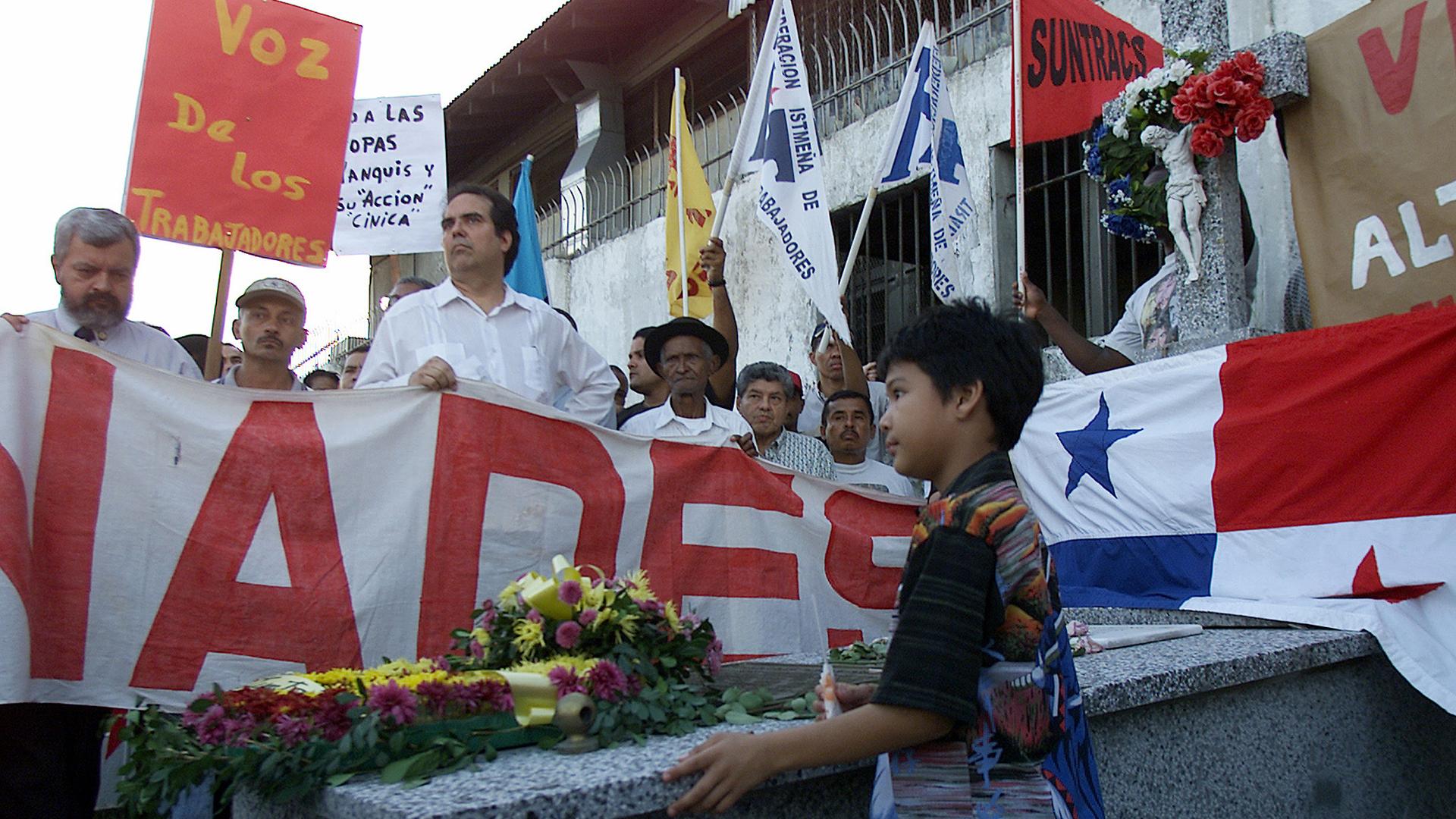50 years ago this week, riots determined the fate of the Panama Canal
Martyrs’ Day is commemorated in Panama City in 2002.
Riots broke out in the Panama Canal zone 50 years ago this week over a flag. The riots eventually led to the deaths of more than two dozen people — and changed history.
Trouble broke out after Panamanian students went en masse to Balboa High School, an American school in the canal zone that had been flying the US flag. They wanted to fly their flag alongside the Stars and Stripes, but were held back by canal zone police.
About 2,000 hostile Americans surrounded them, singing the Star Spangled Banner. In the ensuing scuffle, the Panamanian flag was torn.
"Those students had real patriotic sentiments, a real sense of sovereignty and national dignity," says Jose Ponse, who was 16 and in 10th grade at the time. He watched the events unfold from the school library.
The canal zone had been controlled by the US since before World War I. By 1964, the zone was an American enclave, home to 36,000 US citizens. Few Panamanians got jobs in the canal zone, causing constant resentment.
"There was an apartheid that existed in the colonial atmosphere of the zone. You had the segregation of a group of workers mainly from the Antilles — Afro descendents that were completely segregated," Ponse says.
Angry students eventually made their way back into Panama City that day, Jan. 9, 1964. By then, tensions had intensified. Bricks and stones were thrown, along with molotov cocktails. By evening, US troops were on the streets using tear gas to try and disperse the crowds.
Phil Edmonston was 19 at the time and a young ambulance worker on duty that night.
"This was the first time I’d been in a situation where my life was threatened or that was so chaotic. We had to crawl around because we were being shot at. There were bullet holes everywhere," he recalls.
Over the next few days, the violence spread across Panama. Twenty-two students and four US soldiers were killed. The Panamanians were given state funerals. The Americans claimed the students had been killed by their own countrymen aiming at US troops, but the Panamanians maintained the US was to blame for all the deaths.
America was widely condemned for its response, including by Britain and France. The Panamanian government called off all diplomatic relations with the US until negotiations over control of the Panama Canal could be held.
The crisis led directly to an agreement, reached in 1977, for the US to hand over control of the zone to Panama at the end of 1999.
Jan. 9 is now known as Martyrs' Day — a national holiday when the people of Panama remember those who died, 50 years ago this week.
